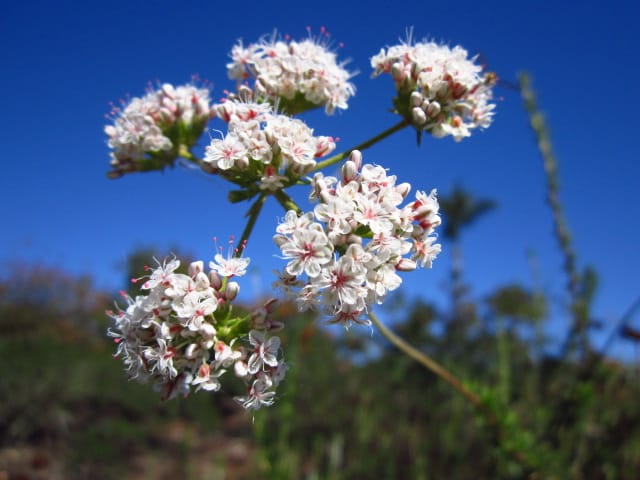This Fall I had the opportunity to conduct the National Survey for Honey Bee Pests and Diseases with Katie Lee in Southern California. The main goal of this survey is to confirm the absence, or presence, of pests and diseases that are exotic, or not introduced at present, to honey bees in the United States. Exotic threats that are of the greatest concern to beekeeping in the U.S. are Apis cerana, Slow Paralysis Virus and the parasitic mites of the Genus Tropilaelaps which includes four known species, Tropilaelaps clareae, T. koenigerum, T. thaii and T. mercedesae. For more information on Tropilaelaps spp. and their life-cycle refer to Jennie Stitzinger’s Tropilaelaps Mites blog.

Over the course of a week, Katie and I visited eleven beekeepers in Riverside and San Diego Counties. Each beekeeper provided us with one bee yard from which we sampled eight hives. From each hive we collected a sample of live bees, pollen, bees in alcohol, and larval stages in alcohol. The live bee sample is used for virus testing. The bees in alcohol, once processed, yield a rough estimate of Varroa and Nosema levels for the bee yard sampled. The larval sample, which is collected by knocking a frame with open brood over a collection pan, allows Research Technicians at the University of Maryland to check for exotic mites that may have been knocked off the frame. The pollen sample will undergo pesticide analysis. Take a look at the 2011-2012 National Honey Bee Pests and Diseases Survey Report for a look at the evolution of this survey from its inception in 2009 to the present. The scope of this survey is impressive as it is currently conducted in thirty-four states providing a look at pest and disease levels from Hawaii to New Hampshire.
As I had never been involved in the National Honey Bee Pests and Diseases Survey, NHBS for short, I was excited at the prospect of learning how the survey is conducted and being a part of such a wide-ranging pest and disease survey. Another plus was that I got a snapshot of beekeeping in Southern California. To follow are a few fun facts that I learned while conducting the survey. Avocado orchards are sought-after overwintering locations as some trees bloom during winter months providing a source of nectar and pollen when it would otherwise be scarce. In the summer months many Southern California beekeepers take their bees to alfalfa fields in Imperial County. Located in the southeast corner of the state this county can reach temperatures above 110 °F in July and August. My favorite new discovery, however, is a native wildflower honey from Eriogonum fasciculatum, commonly called California Buckwheat. It’s amber in color, one might say complex in flavor and has a kick at the end that is very tasty. In regards to taste it might be my new favorite, after Starthistle of course! After all this talk of exotic threats I’ll end with a look at my new favorite native plant found in San Diego County.
